The danger of failures from individual nuclear particles - a myth or reality?
On September 6, 2017, there were 4 powerful flares on the Sun , one of them was given a X9.3 point, which makes it the most powerful in the last 12 years. Georgy Goncharov, a leading researcher at the Pulkovo Observatory, advised : "If you have the opportunity today, tomorrow, the day after tomorrow, do not fly an airplane, do not swim in a submarine, or get behind the wheel - you need to use this." He was objected by Sergey Bogachev, chief scientist at the X-ray Astronomy of the Sun Laboratory at FIAN: “... This is nonsense. The fact is that the hard radiation from flares is completely inhibited in the Earth’s atmosphere. The air practically does not transmit X-rays, caused by flares in the Sun - about 30 kilometers ... It is not dangerous to fly on airplanes, but even to sail on submarines ... There are some reports in the history, the truth of which I cannot judge, about the cases of electrical power output from Troy. Of course, all this affects both wireless communication, satellite communication and communication that uses the reflection of the Earth’s ionosphere, since the properties of the ionosphere change during solar flares. "
Maybe there is no danger, or at least this danger is greatly exaggerated? Let's look at what concerns the individual nuclear particles (SNCs) - neutrons and protons and nuclei of chemical elements having an electrical charge. I hope that my article will dispel both the doubts of some and the paranoia of others.
Consider 2 similar cases associated with air travel:
1) The Boeing 777 of the Aeroflot company, performing the flight from Moscow to Bangkok on May 1, 2017, when approaching the airport "Suvannapum" fell into the area of strong turbulence. As a result, 27 passengers were injured, including children [1] .
2) In 2008, a Qantas passenger aircraft, which flew from Singapore to Perth (Australia), suddenly began a sharp decline and in 23 seconds "dived" down 210 meters. Approximately one third of the passengers received such serious injuries that the aircraft commander decided to deviate from the course and sit down at the nearest airport. [2]
Fig.1. The shortest paths from Moscow to Bangkok and from Singapore to Perth
These cases have a lot in common:
- Passengers suffered aircraft that began to shake or there was a sharp decline;
- both cases occurred near the equator.
But the explanations of these incidents are fundamentally different. In the first case, the so-called “clear-air turbulence” (TYAN) was called the cause, in the second, the effect of a single particle (probably a neutron) on the on-board computer, which affected the autopilot operation. They have been involved in both phenomena for many years, and the electronic component base of onboard electronics is undergoing costly tests.
"If something looks like a duck, swims like a duck and quacks like a duck, then it probably is a duck." If the effects manifest themselves in the same way, and the probability of a separate nuclear particle entering the sensitive area of a micro (or nano-) electronic device with a size of just some 10 mm X 10 mm is “extremely small,” then Occam's razor may be used to explain what is happening more. earthly reasons?
Even among experienced developers of radioelectronic equipment (REE) for space, you can hear: “Our devices have been flying since the 1960s - and we didn’t know any of our TZCH (heavy charged particles), and everything was fine. And now - look! - Invented.
The fact that space and, in particular, solar activity affect electronic devices, people learned a relatively long time. Back in September 1859, an event occurred in the literature called the solar superstorm or the “Carrington Event” (Carrington Event) in honor of the British astronomer who observed the coronal mass ejection (Coronal Mass Ejection, CME). It is said that the northern lights were observed throughout the world, not only in the North, but also in the latitudes corresponding to the Caribbean. Over the Rocky Mountains, the bright northern lights woke the miners, who began to prepare breakfast, thinking that morning had come. It was so light that it was possible to read a newspaper at night [3] . It is difficult to give exact numerical characteristics of this event, however, there are estimates in the literature, and they show that the next major event (solar superstorm) of 1989, the largest since the beginning of the Space Age, was up to 3 times weaker in Dst-index However, this was enough to, for example, one transformer in the city of Salem 1 , Massachusetts, USA, turned into this:
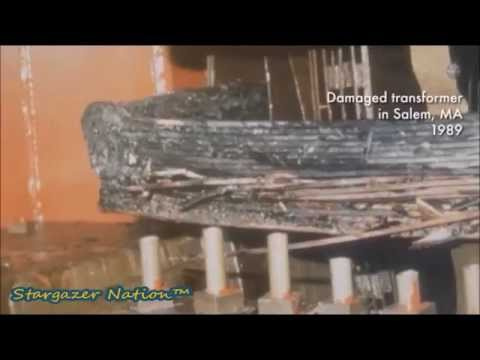
Fig.2 Transformer after the 1989 sun storm
As in the nineteenth century, in 1989 there were large-scale disruptions in the grid of North America and auroras to the latitude of Mexico and Grand Cayman. Failures of high-frequency radio communications were added around the world and, of course, disruptions in the operation of spacecraft [4] .
Mankind added artificial factors to natural causes leading to space weather anomalies: since 1958, the United States has conducted 3 high-altitude nuclear explosions at altitudes of 200-500 km (1 kiloton). On July 9, 1962, as part of the Starfish Prime project, the Americans detonated a 1.45 megaton atomic bomb 400 km above the Johnston Atoll in the Pacific Ocean. In Hawaii (1,500 km from the explosion), about 300 street lamps, televisions, radios and other electronics failed. The glow in the sky could be observed for more than 7 minutes. And in October 1962, in the area of Novaya Zemlya, two high-altitude nuclear devices were blown up by the Soviet already [5] . As a result, one third of the satellites in low orbits failed, including November 24, 1962 2 — the first commercial telecommunication satellite Telstar 1 (Telstar 1), put into orbit a day after the American high-altitude nuclear explosion.
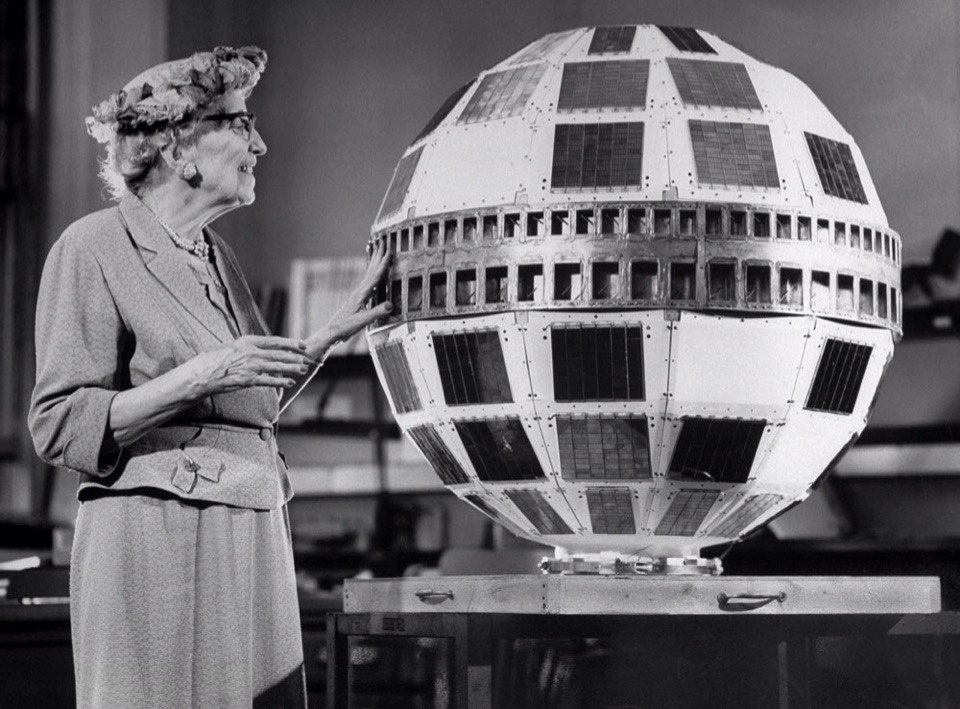
Fig.3 The 78-year-old shareholder of AT & T, Mrs. Louise Bucker, is considering a full-scale model of a Telstar communication satellite at AT & T's Bell Laboratories in September 1961. Telstar 1 will fail due to high-altitude nuclear explosions a year and 2 months later ( Source photo ).
Note that the damaging factors in these events were not separate nuclear particles (SNCs), but the electromagnetic pulse and the accumulated dose of ionizing radiation . Where are the notorious SNF?
SNF (neutrons and charged particles: protons and nuclei) come from space or are formed in the atmosphere as a result of nuclear reactions in two main directions - from the Sun (SCR, solar cosmic rays) and from outside the Solar System (GCR, galactic cosmic rays) . There are a lot of light elements (protons, alpha particles), and very small heavy particles (see further section on the probability of a failure ).
The description of the interaction of the solar wind with the radiation belts of the Earth and SNFC - with a sensitive semiconductor area would take up too much space (I’m sending people who want to learn more to the “What to read?” Section), so I’ll confine myself to general considerations. A charged particle with energy E , falling into the semiconductor region, gives up its energy to ionization, i.e. the formation of electron-hole pairs, which, in the presence of an electric field, do not “collapse” (do not recombine), but are spatially separated. Electrons and holes have different mobilities [6] , so that an excess charge is formed in the active region of the semiconductor. The resulting current pulse can change the state of the storage element - in this case speaking of a failure of the type of SEU (Single Event Upset). Characterization of ionization efficiency - linear energy transfer, LET (Linear Energy Transfer, LET), expressed in MeV * cm2 / mg: LET = where ro is the density of silicon.
SNF come on the scene in 1975, when a Binder article (Binder) with collaborators from Hughes Aircraft Company 3 is published [7] . The paper analyzes the experimental results and substantiates the effect of single particles on the storage elements.
In 1979, a completely unexpected thing was discovered not in space, but on Earth: in memory of the Intel 2107 16-kb DRAM, incomprehensible failures from alpha particles occurred. Where did these particles come from inside the case? It turned out that the source of alpha particles was impurities (of the order of several ppm) of uranium and thorium in the materials of the buildings, which were produced in the 1970s on the Green River in Colorado, a new factory: not far from the riverbed was the old uranium mine [8] ! The article TC May and MH Woods from Intel with a description of this effect [9] was quoted more than 430 times 4 .
Of course, I wanted to see if spacecraft electronics are getting off of the OLAC, and this could be checked where there are a lot of particles, for example, in the area of the so-called South Atlantic (Brazil) magnetic anomaly (South Atlantic magnetic Anomaly, SAA) 5 . And such studies were conducted using British satellites UoSAT-1, -2 [11] and -3 [12] , launched in 1981, 1984 and 1990, respectively. The devices installed, in particular, memory chips from Harris and Hitachi: HM-6564, HM-6564, 6264-LP, 6116-L. All critical information was defended by Hamming (12, 8) [11] . In fig. 4 shows the results of the analysis of failures in electronic components installed on UoSAT-2. A couple of failures over the USSR, the rest - over Brazil.

Fig.4. Analysis of failures in electronics installed on UoSAT-2, as of 1988 [11]
But the results of the same UoSAT-2, presented two years later:
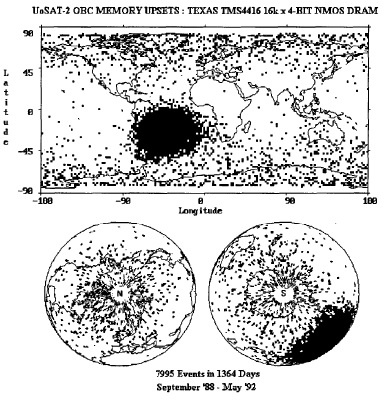
Fig.5 Results of analysis of failures in UoSAT-2 electronics as of 1990 [12]
It is clearly seen that from 1988 to 1990 something happened - something that caused the number of failures to increase dramatically (including in the area of the UAA). And this is something, as you might guess, the 1989 superstorm.
Of course, failures on satellites are fixed constantly, and especially often - during solar flares. Superstorm - a very unpleasant phenomenon, but rare. In the area of SAA, you can try not to fly or fly rarely. Let's estimate the probability of an “event”, i.e. soft (recoverable) malfunction or failure, from a nuclear cell in a microcircuit onboard a spacecraft flying either above or below the radiation belts.
As mentioned above, protons, alpha particles and heavy nuclei come from the Sun (SCR) and from outside the Solar System (GCR). The activity of our star is cyclical: in the solar maximum, the greatest number of particles fly to us, and in the minimum - the smallest. At the same time, the maximum of solar activity reduces flows from the outside (coming in the form of GCR). Fig. 6 illustrates solar activity cycles:
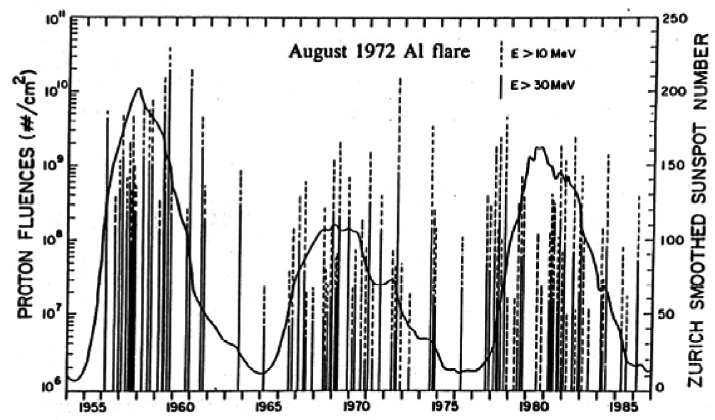
Fig.6 Cyclic activity of the Sun [12]
The fluence (integral flux of protons per cm 2 ) of protons increases at the solar maximum and falls at the solar minimum.
What kind of particles flies more - light or heavy? High or low energy? Recall the definition of linear energy transfer (LET, see above). It turns out that this value is not constant for a given ion, but is a nonlinear function of its energy: there is a dependence maximum (“Bragg peak”), and the heavier the ion, the larger its maximum LET value. In this case, the faster the ion (the greater its energy), the lower the LET, which means less dedicated charge in the sensitive area of the device, less likelihood of failure or failure. It turns out that the most dangerous for the device is not an increase in the energy of the ion, but on the contrary, less energy, corresponding to the maximum value of LET. Getting into the integrated circuit, for example, from the side of the metallization layers, the ion loses energy, while its LET grows, which means it loses energy even faster - a kind of positive feedback mechanism is obtained.
If the energy with which the ion “flies” into the integrated circuit is too small, the ion simply does not reach the active region (before the transistors), but gets stuck in the metallization. If the energy of the “volet” is large enough, the ion will “pierce” the integrated circuit through, practically without selecting a charge in it. But with a sufficiently high energy, there is a possibility that the ion will knock out an atom of silicon or something heavier (for example, tungsten), and the recoil nucleus will be able to reach the active region and lead to a failure or failure. This mechanism is especially important from the point of view of resistance to protons, which are many, and high-energy ones are often found: the proton's own maximum LET is less than 1 MeV * cm 2 / mg and such particles are dangerous only for very small design norms (less than 65 nm), but Due to the high energy of the incoming proton, a whole cascade of secondary particles can form on its path, many of which will have rather large LET 6 values.
Something similar often occurs in the atmosphere in the form of EAS - broad air showers covering several km 2 of the Earth's surface. Figure 7 schematically shows the development of this process. “Only” neutrons, electrons, positrons and mesons, which did not harm the “old” microchips (with large design norms), reach the surface of the Earth, but now may well lead to a failure in modern memory or a microprocessor that stands in your smartphone ( if there is enough energy to fly through the body) [13] .
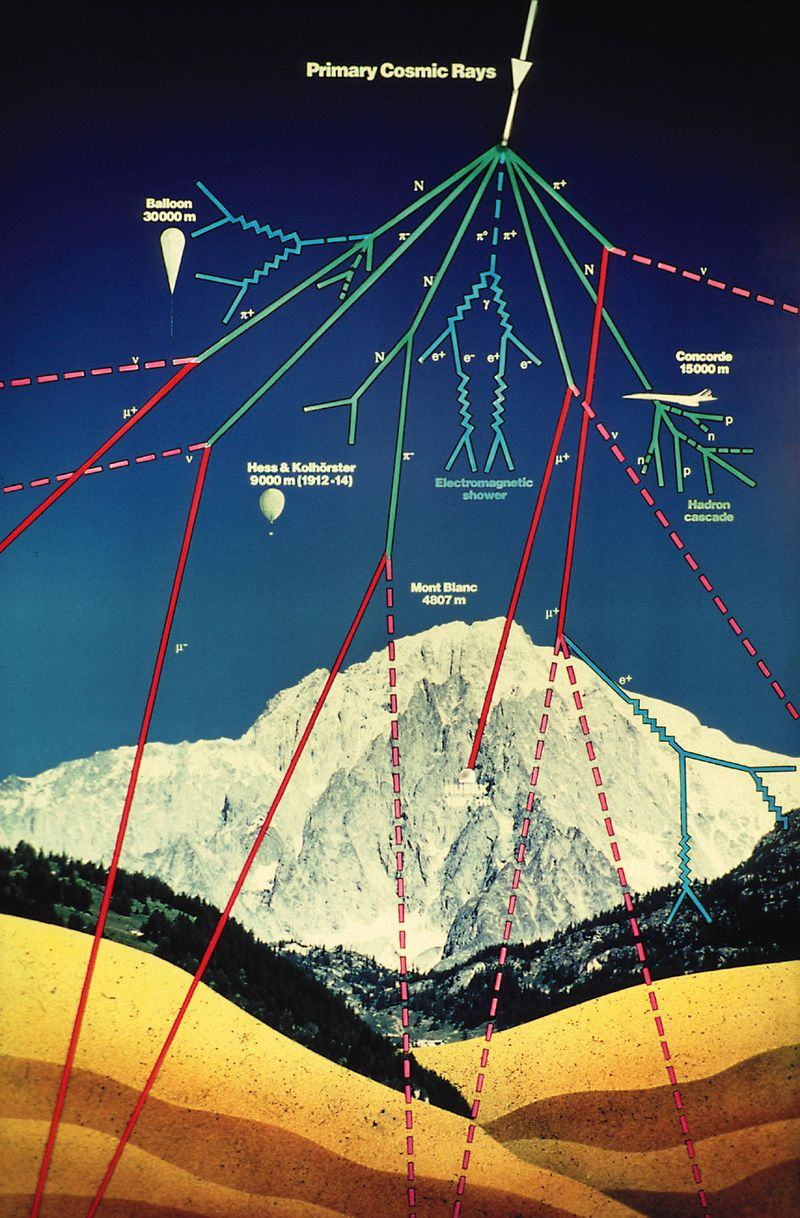
Fig.7. Formation of a shower from a primary cosmic particle
The energy dependence of LET is illustrated in Fig. eight.
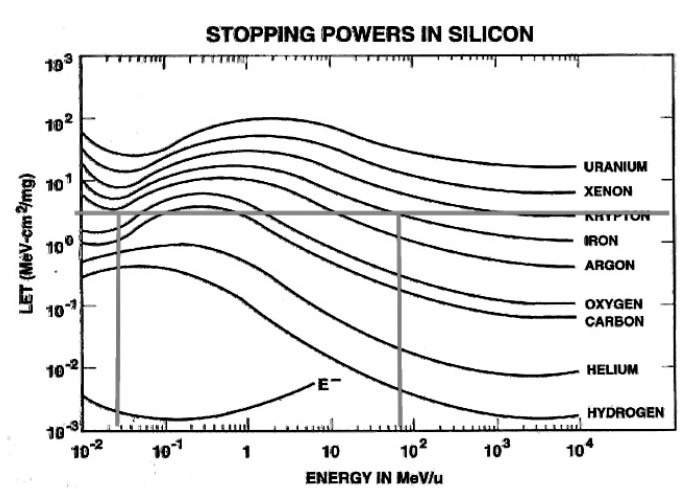
Fig.8. The dependence of LET on energy (according to [14])
As for the composition of cosmic rays, particles with a low LET value predominate, and in the LET region corresponding to iron (about 30 MeV * cm 2 / mg), the flux sharply decreases (Fig. 9 and 10).
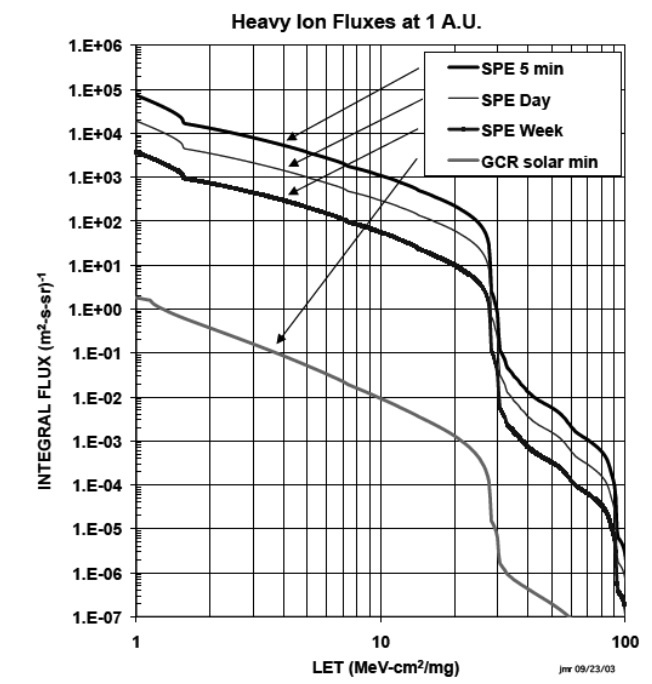
Fig.9. Dependence of the integral particle flux on LET (according to [15])
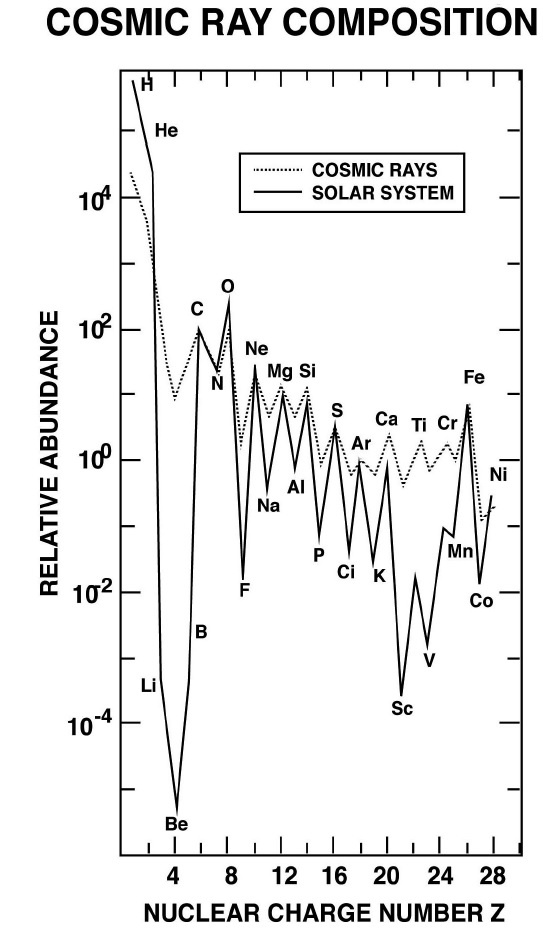
Fig.10 The prevalence of nuclei of heavy elements in cosmic rays (according to [16])
It is quite difficult to understand from the above figures whether it is a lot or a little. Robert Ecoffet of CNES gives the following estimates. In order for a particle with LET to fly 30 MeV * cm 2 / mg through 1 cm 2 , it takes about 30 years, 60 MeV * cm 2 / mg - about 300 years, 100 MeV * cm 2 / mg - about 3 million years [ 17]) .
Does this mean redundancy and “paranoid” requirements set in the technical specifications for the development of a modern electronic component base 7 ?
No, does not mean. And that's why:
1) The times given by Ecoff relate to the detection of a particle. There are quite a few such “detectors” in space: these are all integrated circuits installed in the onboard equipment (try summing them up).
2) As noted above, failure can occur not only from the primary particle, but also from the secondary particle, the LET of which will be sufficient for both the failure and the failure.
And the fact that in space there is a particle with sufficient energy - no doubt. So, on October 15, 1991, at the Dagway test site in Utah, using a cosmic ray detector Fly's Eye Cosmic Ray Detector, discovered a particle of ultrahigh energy - 3x10 8 TeV 8 . This particle was dubbed the "Oh-My-God particle" (particle "Oh my God!"), And since then, at least 15 such events have been recorded.
This is confirmed by the constantly observed failures in the spacecraft, which can be found, for example, on this site .
As for the surface of the Earth, there are enough particles in the natural radiation background that could lead to failure (though not to failure): modern VLSIs use built-in error-correcting coding for internal memories not only to correct errors that occur due to technological reasons, but also to parry the failures caused by the SNF, no matter where they come from (from the surrounding background, from the hull, or from other sources). This is a real problem for supercomputers [18] . In addition, a number of authors consider SNF (mainly alpha particles) as sources of catastrophes of unmanned vehicles that are unable to correctly recognize a road sign or a pedestrian due to a malfunction [19] .
There are probably only two questions left:
1) How to distinguish a failure from an SNF from a failure caused by another cause?
2) What will be the situation with malfunctions from SNF with the further development of micro- and nanoelectronics: will it be better or worse?
There is no universal answer to the first question: analysis of the causes of failure usually includes consideration of circumstances such as the presence or absence of a solar flare, the source of alpha particles in the hull, the radiation situation in orbit, resistance to electrostatic discharge, etc. The verdict “failure from SNF” is pronounced in approximately 30% -45% of cases [20] .
The answer to the second question is the following. On the one hand, a decrease in design standards leads to an increase in the number of multiple failures, i.e. malfunctioning is getting worse. On the other hand, considerable experience has been gained in dealing with failures both at the hardware level and at the chip level, so developers are ready for such a degradation.
As is often the case, both experts are right, the words of which are given at the beginning of the article: the apparent contradictions are related to the fact that different aspects of solar flares are discussed. Indeed, X-ray radiation from space does not reach the surface of the Earth. But SNF generated by cosmic particles, firstly, pose a real threat to aircraft, and secondly, they can generate EAS reaching the Earth’s surface in the form of neutrons, electrons and mesons that can cause disruptions in modern VLSI. In addition, strong solar flares such as the Carrington event can disable even the power grid. Much weaker events lead to noticeable effects, and these are not long-standing events that have become legendary: 29-30.10.2003 - blackout in Malmo (Sweden) due to transformer overheating, emergency events in the USA and South Africa; September 2005 - Disconnection in many parts of North America and a sharp decrease in the accuracy of GPS satellite navigation ...
In addition, Nature constantly presents surprises, and the example of the "oh-my-God" particle proves us after Shakespeare's Hamlet to exclaim: "There is much in the world, Horatio, that our sages have not dreamed of!"
The author thanks G.A. Protopopov - sector head of the branch of OJSC "ORKK" - "NII KP" for helping with the materials.
1) Advanced Forecast For Ensuring Communications Through Space - the website of the European Union space weather program and its study.
2) Physics of radiation effects affecting electronics in space by amartology
3) Microelectronics for space and military by BarsMonster
4) K. Tapero, V. Ulimov, A. Chlenov. Radiation effects in silicon integrated circuits for space applications .
1 Where was the famous witch hunt .
2 Some Telstar 1 functionality was initially restored, but on February 21, 1963, the satellite was completely lost.
3 Remember the movie "Aviator" about Howard Hughes, directed by Martin Scorsese, starring Leonardo DiCaprio?
4 According to the Web of Science .
5 The role of SAA as the main source of ionizing radiation in low non-polar orbits was confirmed by comparing the proton fluxes measured during the space mission Mercury-Atlas 7 (launched on March 24, 1962), with data from the Mercury-Atlas 8 mission (launched on October 3, 1962 , 2 weeks before the beginning of the Caribbean crisis) [10] .
6 About 15 MeV * cm 2 / mg in the maximum have Si and Al, therefore for silicon integrated circuits to achieve the absence of failures for all ions with LET less than 15 MeV * cm 2 / mg is a great success, meaning that from protons the probability of failure or failure negligible (again, if we are not dealing with too small design norms, as will be discussed later).
7 For example, the absence of a catastrophic failure with respect to the thyristor effect when exposed to particles with LET of at least 60 MeV * cm 2 / mg.
8 It is as if the detector registered a 142 g baseball, flying at a speed of 93.6 km / h.
[1] RIA "News"
[2] "Alien particles from space-saving devices for personal electronic devices" by David Salisbury
[3] You Should Have Heard About the Carrington Event
[4] Superactive Region AR: 5395 of SOLAR-CYCLE-22
[5] V.S. Pershenkov. The history of US-Russia cooperation in the field of radiation resistance of electronic systems. Proceedings of NIISI RAS. Vol. 7, No. 2, pp. 114-117. 2017 (in print)
[6] Messenger, GC; "Collection of Charge on Junction Nodes from Ion Tracks," IEEE Transactions on Nuclear Science, Volume: 29, Issue: 6, Publication Year: 1982, Page (s): 2024 - 2031.
[7] D. Binder, et al., “Satellite Anomalies from Galactic Cosmic Rays,” IEEE Trans. Nucl. Sci., Vol. 22, no. 6, pp. 2675-2680, Dec. 1975.
[8] JF Ziegler, HW Curtis, HP Muhlfeld, CJ Montrose, et al., IBM experiments in computer electronics (1978-1994). IBM 1. RES. DEVELOP. Vol. 40 NO. 1 JANUARY 1996.
[9] TC May and MH Woods, Alpha-Particle-Induced Soft Errors in Dynamic
Memories, IEEE Trans. Electron Dev., Vol. 26, no. 1, pp. 2-9, 1979
[10] Robert G. Richmond. RADIATION DOSIMETRY FOR THE GEMINI PROGRAM. NASA technical note, 1972.
[11] Jeff W Ward. OBSERVATIONS OF SINGLE-EVENT MEMORY UPSETS ON THE UOSAT-2 SATELLITE. Proceedings 2nd Utah Stale University AIAA Conference on Small Satellites, Logan, Utah. 8-21, 1988.
[12] C Underwood, E Daly, R Harboe-Sorensen, “The UOSAT-2 Satellite”, Proceedings of the ESA Space Environment Workshop, ESTEC, Ott 1990.
[13] A. Akkerman, J. Barak, and Nir M. Yitzhak, “Role of Elastic Scattering of Protons, Muons, and Electrons in Inducing Single Event Upsets,” IEEE Trans. on Nucl. Sci., 2017.
[14] J. Barth, “Modeling space radiation environments,” Notes from 1997 IEEE Nuclear and Space Effects Conference Short Course.
[15] Henry B. Garrett. Spacecraft Environment Interactions. 2011 IEEE NSREC Short Course.
[16] PR Meyer, R. Ramaty, and R. Webber, “Cosmic Rays - Astronomy with Energetic Particles,” in Physics Today. vol. Oct., 1974.
[17] Robert Ecoffet, 2nd RADECS "LET workshop", UCL, B, 25-01-07.
[18] Marc Snir, et al., "Addressing Failures in Exascale Computing," Report on a Workshop on Aug 4-11, 2012 at Park City, Utah.
[19] Paolo Rech. How to Deal with Evaluation and Mitigation
of GPUs Soft-Errors. GPU Technology Conference. April 6th 2015 - San José, CA.
[20] 2015 Short Course NSREC, Section IV
Maybe there is no danger, or at least this danger is greatly exaggerated? Let's look at what concerns the individual nuclear particles (SNCs) - neutrons and protons and nuclei of chemical elements having an electrical charge. I hope that my article will dispel both the doubts of some and the paranoia of others.
Consider 2 similar cases associated with air travel:
1) The Boeing 777 of the Aeroflot company, performing the flight from Moscow to Bangkok on May 1, 2017, when approaching the airport "Suvannapum" fell into the area of strong turbulence. As a result, 27 passengers were injured, including children [1] .
2) In 2008, a Qantas passenger aircraft, which flew from Singapore to Perth (Australia), suddenly began a sharp decline and in 23 seconds "dived" down 210 meters. Approximately one third of the passengers received such serious injuries that the aircraft commander decided to deviate from the course and sit down at the nearest airport. [2]

| 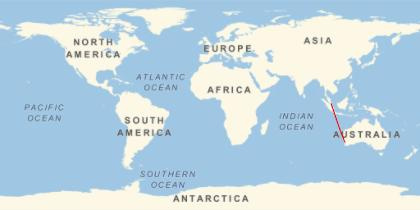
|
Fig.1. The shortest paths from Moscow to Bangkok and from Singapore to Perth
These cases have a lot in common:
- Passengers suffered aircraft that began to shake or there was a sharp decline;
- both cases occurred near the equator.
But the explanations of these incidents are fundamentally different. In the first case, the so-called “clear-air turbulence” (TYAN) was called the cause, in the second, the effect of a single particle (probably a neutron) on the on-board computer, which affected the autopilot operation. They have been involved in both phenomena for many years, and the electronic component base of onboard electronics is undergoing costly tests.
"If something looks like a duck, swims like a duck and quacks like a duck, then it probably is a duck." If the effects manifest themselves in the same way, and the probability of a separate nuclear particle entering the sensitive area of a micro (or nano-) electronic device with a size of just some 10 mm X 10 mm is “extremely small,” then Occam's razor may be used to explain what is happening more. earthly reasons?
Background
Even among experienced developers of radioelectronic equipment (REE) for space, you can hear: “Our devices have been flying since the 1960s - and we didn’t know any of our TZCH (heavy charged particles), and everything was fine. And now - look! - Invented.
The fact that space and, in particular, solar activity affect electronic devices, people learned a relatively long time. Back in September 1859, an event occurred in the literature called the solar superstorm or the “Carrington Event” (Carrington Event) in honor of the British astronomer who observed the coronal mass ejection (Coronal Mass Ejection, CME). It is said that the northern lights were observed throughout the world, not only in the North, but also in the latitudes corresponding to the Caribbean. Over the Rocky Mountains, the bright northern lights woke the miners, who began to prepare breakfast, thinking that morning had come. It was so light that it was possible to read a newspaper at night [3] . It is difficult to give exact numerical characteristics of this event, however, there are estimates in the literature, and they show that the next major event (solar superstorm) of 1989, the largest since the beginning of the Space Age, was up to 3 times weaker in Dst-index However, this was enough to, for example, one transformer in the city of Salem 1 , Massachusetts, USA, turned into this:

Fig.2 Transformer after the 1989 sun storm
As in the nineteenth century, in 1989 there were large-scale disruptions in the grid of North America and auroras to the latitude of Mexico and Grand Cayman. Failures of high-frequency radio communications were added around the world and, of course, disruptions in the operation of spacecraft [4] .
Mankind added artificial factors to natural causes leading to space weather anomalies: since 1958, the United States has conducted 3 high-altitude nuclear explosions at altitudes of 200-500 km (1 kiloton). On July 9, 1962, as part of the Starfish Prime project, the Americans detonated a 1.45 megaton atomic bomb 400 km above the Johnston Atoll in the Pacific Ocean. In Hawaii (1,500 km from the explosion), about 300 street lamps, televisions, radios and other electronics failed. The glow in the sky could be observed for more than 7 minutes. And in October 1962, in the area of Novaya Zemlya, two high-altitude nuclear devices were blown up by the Soviet already [5] . As a result, one third of the satellites in low orbits failed, including November 24, 1962 2 — the first commercial telecommunication satellite Telstar 1 (Telstar 1), put into orbit a day after the American high-altitude nuclear explosion.

Fig.3 The 78-year-old shareholder of AT & T, Mrs. Louise Bucker, is considering a full-scale model of a Telstar communication satellite at AT & T's Bell Laboratories in September 1961. Telstar 1 will fail due to high-altitude nuclear explosions a year and 2 months later ( Source photo ).
Note that the damaging factors in these events were not separate nuclear particles (SNCs), but the electromagnetic pulse and the accumulated dose of ionizing radiation . Where are the notorious SNF?
SNF (neutrons and charged particles: protons and nuclei) come from space or are formed in the atmosphere as a result of nuclear reactions in two main directions - from the Sun (SCR, solar cosmic rays) and from outside the Solar System (GCR, galactic cosmic rays) . There are a lot of light elements (protons, alpha particles), and very small heavy particles (see further section on the probability of a failure ).
The description of the interaction of the solar wind with the radiation belts of the Earth and SNFC - with a sensitive semiconductor area would take up too much space (I’m sending people who want to learn more to the “What to read?” Section), so I’ll confine myself to general considerations. A charged particle with energy E , falling into the semiconductor region, gives up its energy to ionization, i.e. the formation of electron-hole pairs, which, in the presence of an electric field, do not “collapse” (do not recombine), but are spatially separated. Electrons and holes have different mobilities [6] , so that an excess charge is formed in the active region of the semiconductor. The resulting current pulse can change the state of the storage element - in this case speaking of a failure of the type of SEU (Single Event Upset). Characterization of ionization efficiency - linear energy transfer, LET (Linear Energy Transfer, LET), expressed in MeV * cm2 / mg: LET = where ro is the density of silicon.
SNF come on the scene in 1975, when a Binder article (Binder) with collaborators from Hughes Aircraft Company 3 is published [7] . The paper analyzes the experimental results and substantiates the effect of single particles on the storage elements.
In 1979, a completely unexpected thing was discovered not in space, but on Earth: in memory of the Intel 2107 16-kb DRAM, incomprehensible failures from alpha particles occurred. Where did these particles come from inside the case? It turned out that the source of alpha particles was impurities (of the order of several ppm) of uranium and thorium in the materials of the buildings, which were produced in the 1970s on the Green River in Colorado, a new factory: not far from the riverbed was the old uranium mine [8] ! The article TC May and MH Woods from Intel with a description of this effect [9] was quoted more than 430 times 4 .
Of course, I wanted to see if spacecraft electronics are getting off of the OLAC, and this could be checked where there are a lot of particles, for example, in the area of the so-called South Atlantic (Brazil) magnetic anomaly (South Atlantic magnetic Anomaly, SAA) 5 . And such studies were conducted using British satellites UoSAT-1, -2 [11] and -3 [12] , launched in 1981, 1984 and 1990, respectively. The devices installed, in particular, memory chips from Harris and Hitachi: HM-6564, HM-6564, 6264-LP, 6116-L. All critical information was defended by Hamming (12, 8) [11] . In fig. 4 shows the results of the analysis of failures in electronic components installed on UoSAT-2. A couple of failures over the USSR, the rest - over Brazil.

Fig.4. Analysis of failures in electronics installed on UoSAT-2, as of 1988 [11]
But the results of the same UoSAT-2, presented two years later:

Fig.5 Results of analysis of failures in UoSAT-2 electronics as of 1990 [12]
It is clearly seen that from 1988 to 1990 something happened - something that caused the number of failures to increase dramatically (including in the area of the UAA). And this is something, as you might guess, the 1989 superstorm.
Probability estimate
Of course, failures on satellites are fixed constantly, and especially often - during solar flares. Superstorm - a very unpleasant phenomenon, but rare. In the area of SAA, you can try not to fly or fly rarely. Let's estimate the probability of an “event”, i.e. soft (recoverable) malfunction or failure, from a nuclear cell in a microcircuit onboard a spacecraft flying either above or below the radiation belts.
As mentioned above, protons, alpha particles and heavy nuclei come from the Sun (SCR) and from outside the Solar System (GCR). The activity of our star is cyclical: in the solar maximum, the greatest number of particles fly to us, and in the minimum - the smallest. At the same time, the maximum of solar activity reduces flows from the outside (coming in the form of GCR). Fig. 6 illustrates solar activity cycles:

Fig.6 Cyclic activity of the Sun [12]
The fluence (integral flux of protons per cm 2 ) of protons increases at the solar maximum and falls at the solar minimum.
What kind of particles flies more - light or heavy? High or low energy? Recall the definition of linear energy transfer (LET, see above). It turns out that this value is not constant for a given ion, but is a nonlinear function of its energy: there is a dependence maximum (“Bragg peak”), and the heavier the ion, the larger its maximum LET value. In this case, the faster the ion (the greater its energy), the lower the LET, which means less dedicated charge in the sensitive area of the device, less likelihood of failure or failure. It turns out that the most dangerous for the device is not an increase in the energy of the ion, but on the contrary, less energy, corresponding to the maximum value of LET. Getting into the integrated circuit, for example, from the side of the metallization layers, the ion loses energy, while its LET grows, which means it loses energy even faster - a kind of positive feedback mechanism is obtained.
If the energy with which the ion “flies” into the integrated circuit is too small, the ion simply does not reach the active region (before the transistors), but gets stuck in the metallization. If the energy of the “volet” is large enough, the ion will “pierce” the integrated circuit through, practically without selecting a charge in it. But with a sufficiently high energy, there is a possibility that the ion will knock out an atom of silicon or something heavier (for example, tungsten), and the recoil nucleus will be able to reach the active region and lead to a failure or failure. This mechanism is especially important from the point of view of resistance to protons, which are many, and high-energy ones are often found: the proton's own maximum LET is less than 1 MeV * cm 2 / mg and such particles are dangerous only for very small design norms (less than 65 nm), but Due to the high energy of the incoming proton, a whole cascade of secondary particles can form on its path, many of which will have rather large LET 6 values.
Something similar often occurs in the atmosphere in the form of EAS - broad air showers covering several km 2 of the Earth's surface. Figure 7 schematically shows the development of this process. “Only” neutrons, electrons, positrons and mesons, which did not harm the “old” microchips (with large design norms), reach the surface of the Earth, but now may well lead to a failure in modern memory or a microprocessor that stands in your smartphone ( if there is enough energy to fly through the body) [13] .

Fig.7. Formation of a shower from a primary cosmic particle
The energy dependence of LET is illustrated in Fig. eight.

Fig.8. The dependence of LET on energy (according to [14])
As for the composition of cosmic rays, particles with a low LET value predominate, and in the LET region corresponding to iron (about 30 MeV * cm 2 / mg), the flux sharply decreases (Fig. 9 and 10).

Fig.9. Dependence of the integral particle flux on LET (according to [15])

Fig.10 The prevalence of nuclei of heavy elements in cosmic rays (according to [16])
It is quite difficult to understand from the above figures whether it is a lot or a little. Robert Ecoffet of CNES gives the following estimates. In order for a particle with LET to fly 30 MeV * cm 2 / mg through 1 cm 2 , it takes about 30 years, 60 MeV * cm 2 / mg - about 300 years, 100 MeV * cm 2 / mg - about 3 million years [ 17]) .
Does this mean redundancy and “paranoid” requirements set in the technical specifications for the development of a modern electronic component base 7 ?
Myth or not myth?
No, does not mean. And that's why:
1) The times given by Ecoff relate to the detection of a particle. There are quite a few such “detectors” in space: these are all integrated circuits installed in the onboard equipment (try summing them up).
2) As noted above, failure can occur not only from the primary particle, but also from the secondary particle, the LET of which will be sufficient for both the failure and the failure.
And the fact that in space there is a particle with sufficient energy - no doubt. So, on October 15, 1991, at the Dagway test site in Utah, using a cosmic ray detector Fly's Eye Cosmic Ray Detector, discovered a particle of ultrahigh energy - 3x10 8 TeV 8 . This particle was dubbed the "Oh-My-God particle" (particle "Oh my God!"), And since then, at least 15 such events have been recorded.
This is confirmed by the constantly observed failures in the spacecraft, which can be found, for example, on this site .
As for the surface of the Earth, there are enough particles in the natural radiation background that could lead to failure (though not to failure): modern VLSIs use built-in error-correcting coding for internal memories not only to correct errors that occur due to technological reasons, but also to parry the failures caused by the SNF, no matter where they come from (from the surrounding background, from the hull, or from other sources). This is a real problem for supercomputers [18] . In addition, a number of authors consider SNF (mainly alpha particles) as sources of catastrophes of unmanned vehicles that are unable to correctly recognize a road sign or a pedestrian due to a malfunction [19] .
There are probably only two questions left:
1) How to distinguish a failure from an SNF from a failure caused by another cause?
2) What will be the situation with malfunctions from SNF with the further development of micro- and nanoelectronics: will it be better or worse?
There is no universal answer to the first question: analysis of the causes of failure usually includes consideration of circumstances such as the presence or absence of a solar flare, the source of alpha particles in the hull, the radiation situation in orbit, resistance to electrostatic discharge, etc. The verdict “failure from SNF” is pronounced in approximately 30% -45% of cases [20] .
The answer to the second question is the following. On the one hand, a decrease in design standards leads to an increase in the number of multiple failures, i.e. malfunctioning is getting worse. On the other hand, considerable experience has been gained in dealing with failures both at the hardware level and at the chip level, so developers are ready for such a degradation.
findings
As is often the case, both experts are right, the words of which are given at the beginning of the article: the apparent contradictions are related to the fact that different aspects of solar flares are discussed. Indeed, X-ray radiation from space does not reach the surface of the Earth. But SNF generated by cosmic particles, firstly, pose a real threat to aircraft, and secondly, they can generate EAS reaching the Earth’s surface in the form of neutrons, electrons and mesons that can cause disruptions in modern VLSI. In addition, strong solar flares such as the Carrington event can disable even the power grid. Much weaker events lead to noticeable effects, and these are not long-standing events that have become legendary: 29-30.10.2003 - blackout in Malmo (Sweden) due to transformer overheating, emergency events in the USA and South Africa; September 2005 - Disconnection in many parts of North America and a sharp decrease in the accuracy of GPS satellite navigation ...
In addition, Nature constantly presents surprises, and the example of the "oh-my-God" particle proves us after Shakespeare's Hamlet to exclaim: "There is much in the world, Horatio, that our sages have not dreamed of!"
Thanks
The author thanks G.A. Protopopov - sector head of the branch of OJSC "ORKK" - "NII KP" for helping with the materials.
What to read?
1) Advanced Forecast For Ensuring Communications Through Space - the website of the European Union space weather program and its study.
2) Physics of radiation effects affecting electronics in space by amartology
3) Microelectronics for space and military by BarsMonster
4) K. Tapero, V. Ulimov, A. Chlenov. Radiation effects in silicon integrated circuits for space applications .
Notes
1 Where was the famous witch hunt .
2 Some Telstar 1 functionality was initially restored, but on February 21, 1963, the satellite was completely lost.
3 Remember the movie "Aviator" about Howard Hughes, directed by Martin Scorsese, starring Leonardo DiCaprio?
4 According to the Web of Science .
5 The role of SAA as the main source of ionizing radiation in low non-polar orbits was confirmed by comparing the proton fluxes measured during the space mission Mercury-Atlas 7 (launched on March 24, 1962), with data from the Mercury-Atlas 8 mission (launched on October 3, 1962 , 2 weeks before the beginning of the Caribbean crisis) [10] .
6 About 15 MeV * cm 2 / mg in the maximum have Si and Al, therefore for silicon integrated circuits to achieve the absence of failures for all ions with LET less than 15 MeV * cm 2 / mg is a great success, meaning that from protons the probability of failure or failure negligible (again, if we are not dealing with too small design norms, as will be discussed later).
7 For example, the absence of a catastrophic failure with respect to the thyristor effect when exposed to particles with LET of at least 60 MeV * cm 2 / mg.
8 It is as if the detector registered a 142 g baseball, flying at a speed of 93.6 km / h.
Literature
[1] RIA "News"
[2] "Alien particles from space-saving devices for personal electronic devices" by David Salisbury
[3] You Should Have Heard About the Carrington Event
[4] Superactive Region AR: 5395 of SOLAR-CYCLE-22
[5] V.S. Pershenkov. The history of US-Russia cooperation in the field of radiation resistance of electronic systems. Proceedings of NIISI RAS. Vol. 7, No. 2, pp. 114-117. 2017 (in print)
[6] Messenger, GC; "Collection of Charge on Junction Nodes from Ion Tracks," IEEE Transactions on Nuclear Science, Volume: 29, Issue: 6, Publication Year: 1982, Page (s): 2024 - 2031.
[7] D. Binder, et al., “Satellite Anomalies from Galactic Cosmic Rays,” IEEE Trans. Nucl. Sci., Vol. 22, no. 6, pp. 2675-2680, Dec. 1975.
[8] JF Ziegler, HW Curtis, HP Muhlfeld, CJ Montrose, et al., IBM experiments in computer electronics (1978-1994). IBM 1. RES. DEVELOP. Vol. 40 NO. 1 JANUARY 1996.
[9] TC May and MH Woods, Alpha-Particle-Induced Soft Errors in Dynamic
Memories, IEEE Trans. Electron Dev., Vol. 26, no. 1, pp. 2-9, 1979
[10] Robert G. Richmond. RADIATION DOSIMETRY FOR THE GEMINI PROGRAM. NASA technical note, 1972.
[11] Jeff W Ward. OBSERVATIONS OF SINGLE-EVENT MEMORY UPSETS ON THE UOSAT-2 SATELLITE. Proceedings 2nd Utah Stale University AIAA Conference on Small Satellites, Logan, Utah. 8-21, 1988.
[12] C Underwood, E Daly, R Harboe-Sorensen, “The UOSAT-2 Satellite”, Proceedings of the ESA Space Environment Workshop, ESTEC, Ott 1990.
[13] A. Akkerman, J. Barak, and Nir M. Yitzhak, “Role of Elastic Scattering of Protons, Muons, and Electrons in Inducing Single Event Upsets,” IEEE Trans. on Nucl. Sci., 2017.
[14] J. Barth, “Modeling space radiation environments,” Notes from 1997 IEEE Nuclear and Space Effects Conference Short Course.
[15] Henry B. Garrett. Spacecraft Environment Interactions. 2011 IEEE NSREC Short Course.
[16] PR Meyer, R. Ramaty, and R. Webber, “Cosmic Rays - Astronomy with Energetic Particles,” in Physics Today. vol. Oct., 1974.
[17] Robert Ecoffet, 2nd RADECS "LET workshop", UCL, B, 25-01-07.
[18] Marc Snir, et al., "Addressing Failures in Exascale Computing," Report on a Workshop on Aug 4-11, 2012 at Park City, Utah.
[19] Paolo Rech. How to Deal with Evaluation and Mitigation
of GPUs Soft-Errors. GPU Technology Conference. April 6th 2015 - San José, CA.
[20] 2015 Short Course NSREC, Section IV
All Articles